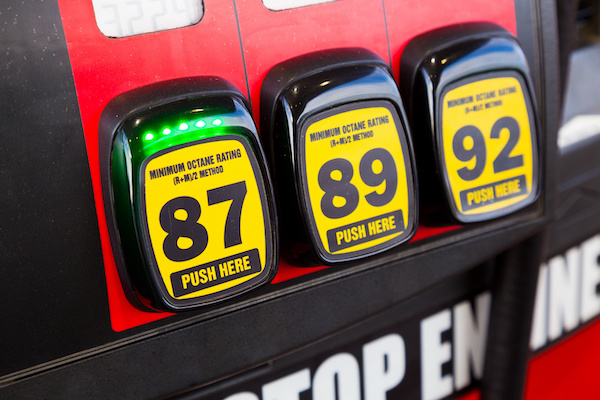With various options at the pump, how do you know which one to choose? Your combustion engine relies on the ignition of air and fuel to run. If one of these parts is missing, your engine will likely stop running.
There are so many different levels of fuel. Before you head to the pump, you need to know which kind of fuel is best suited for your car. Using improper gasoline can lead to the fuel system and engine damage in some cases. That is why choosing the proper fuel for your vehicle is key!
WHICH TYPE OF GAS IS BEST FOR MY CAR?
First and foremost, you should always refer to your vehicle’s owner’s manual whenever you have questions. One of the pages should tell you which fuel grade is best for your engine. It will be listed as the minimum octane rating in the owner’s manual. Some manufacturers will even put a sticker near the gas cap to make it easier on you.
WHAT IS OCTANE?
Octane rating measures a gasoline’s ability to withstand “knocking” or “pinging” during combustion. It would be best always to use at least the minimum octane rating suggested by your vehicle’s manufacturers. Generally, regular fuel is 87 octane, midgrade is often 89 octane, and premium is 91 or 93 octane.
As mentioned earlier, the best source to use is your owner’s manual. Some people will stray away from their car’s recommendation and cheap out and get a lower fuel grade, which is highly unadvised; you may experience engine knocking. On the other hand, some drivers will get a higher octane level, thinking it’ll improve their MPG. While getting higher than recommended octane gas won’t damage your vehicle, it won’t add any noticeable benefits.
If you want to get the most out of each gallon of gas and keep your car running healthy, please stick to your manufacturer’s recommendation. If you require any fuel system services, please look no further than Fast Lane European.
 Mon – Fri: 8:30 AM – 5:30 PM
Mon – Fri: 8:30 AM – 5:30 PM 3585 Stevens Creek Blvd, San Jose, CA 95117
3585 Stevens Creek Blvd, San Jose, CA 95117 (408) 985-2000
(408) 985-2000 (408) 985-1000
(408) 985-1000





 Make An Appointment
Make An Appointment